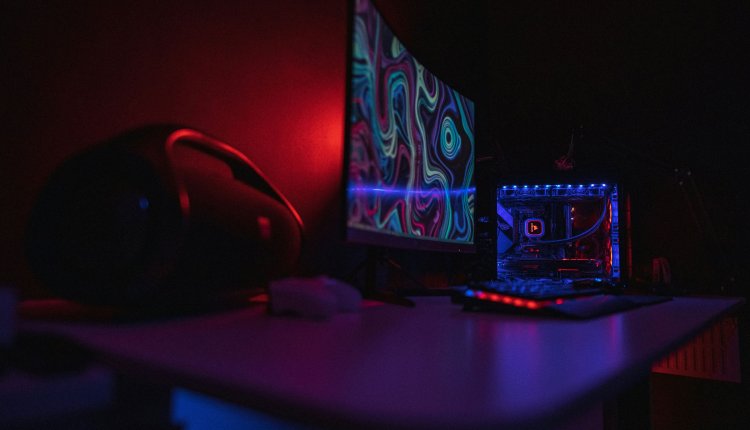Introduction: Pacific Drive, an atmospheric driving game set in the Pacific Northwest’s mysterious forests, delivers a thrilling adventure through an expansive open world filled with perilous weather, strange anomalies, and a sense of eerie isolation. The game promises high-fidelity visuals, fast-paced gameplay, and a haunting experience that draws players into its world. However, despite its promising gameplay mechanics and story, some users have encountered a major issue with the game’s graphical settings: DLSS (Deep Learning Super Sampling), a technology developed by NVIDIA, seems to be broken for some players.
DLSS is a key feature that helps improve frame rates while maintaining high visual quality, using AI to upscale lower-resolution images in real-time. For gamers with NVIDIA RTX graphics cards, DLSS can be a game-changer, enabling smoother gameplay, especially at high resolutions. But in the case of Pacific Drive, many players report glitches, performance drops, or even crashes when enabling DLSS. Let’s dive into why DLSS may be broken in Pacific Drive and how you can solve or mitigate the issue.

What Is DLSS, and Why Does It Matter?
Before we dive into the troubleshooting steps, let’s first understand what DLSS is and why it’s so important in gaming.
DLSS is NVIDIA’s upscaling technology, available on RTX graphics cards, that allows users to render games at a lower resolution and then use AI to upscale the image to near-native resolution quality. The result is a higher frame rate and better performance without sacrificing too much visual fidelity. In graphically demanding games like Pacific Drive, DLSS can be crucial for maintaining smooth performance, especially for those gaming at 1440p or 4K resolution.
However, when DLSS isn’t working as expected, it can cause significant problems, including:
- Frame Rate Drops: Instead of improving performance, DLSS could cause stuttering, slowdowns, or unexpected frame drops.
- Visual Artifacts: Some users report strange visual effects, such as blurring or ghosting, that negatively impact the experience.
- Crashes or Freezes: Enabling DLSS could lead to the game crashing, especially in more demanding scenes.
Why Is DLSS Broken in Pacific Drive?
There are several reasons why DLSS might not work properly in Pacific Drive. Let’s look at the possible causes:
1. Incompatibility with Game Settings
Pacific Drive may not have been fully optimized for DLSS, leading to issues when the feature is enabled. This can happen with early releases, where the developers may not have had the time to refine the implementation of the technology. In these cases, DLSS settings may not work as intended.
2. Driver or Software Issues
DLSS relies on specific drivers and software support, including the NVIDIA Game Ready drivers, which are frequently updated to improve compatibility and fix bugs. If you’re using an outdated driver or one that’s not tailored for Pacific Drive, DLSS may malfunction.
3. Game Engine Limitations
Some game engines are not built with DLSS in mind, meaning that the way graphics are rendered in Pacific Drive could conflict with how DLSS tries to upscale the image. This incompatibility might lead to visual glitches or even crashes.
4. Hardware or Overheating Issues
Sometimes, hardware limitations or overheating can cause DLSS to malfunction. When the GPU is pushed too hard with DLSS enabled, it could fail to maintain stable performance, resulting in issues. This is particularly relevant for players with lower-end NVIDIA RTX cards.
How to Solve DLSS Issues in Pacific Drive
If you’re facing problems with DLSS in Pacific Drive, here are several troubleshooting steps to help you resolve the issue:
1. Update Your Graphics Drivers
The first step in fixing DLSS issues is to ensure your NVIDIA drivers are up-to-date. Newer drivers are often released to improve compatibility with specific games and technologies like DLSS. You can update your drivers by using the NVIDIA GeForce Experience app or manually downloading the latest drivers from NVIDIA’s official website.
- Open GeForce Experience and click on Drivers.
- Click Check for Updates to see if a new driver is available.
- Download and install the latest driver.
Once the driver is updated, restart your PC and relaunch Pacific Drive to see if DLSS works properly.
2. Disable or Adjust DLSS Settings
If DLSS is causing issues, you may want to try disabling it entirely or experimenting with different DLSS modes to see if any of them resolve the problem.
To adjust DLSS settings:
- Open Pacific Drive and go to Graphics Settings.
- Look for the DLSS option and try switching between different modes such as Quality, Balanced, or Performance.
- If DLSS is still broken or causing problems, try turning it off completely and relying on other settings like anti-aliasing to improve image quality.
3. Lower In-Game Graphics Settings
Sometimes, DLSS may not perform well at higher graphical settings, especially if your system is struggling to handle the game. Try lowering some of the game’s graphics settings to reduce the strain on your GPU, which may help DLSS work more efficiently. Reduce settings like:
- Texture Quality
- Shadow Quality
- Ambient Occlusion
- Draw Distance
Once the settings are lowered, restart the game to check if performance improves.
4. Roll Back to a Previous Driver Version
If the issue started after updating your graphics drivers, it might be worth rolling back to a previous version. Some newer drivers may cause compatibility issues with specific games. You can download older versions of NVIDIA drivers from the official website.
To roll back to a previous driver:
- Open Device Manager and find your graphics card under Display Adapters.
- Right-click on it and select Properties.
- In the Driver tab, click Roll Back Driver if the option is available.
- If rolling back is not an option, manually download and install a previous driver version from NVIDIA’s website.
5. Check for Game Patches
Game developers often release patches to fix bugs and improve performance. Check if there’s an update available for Pacific Drive that addresses DLSS or graphical issues. Keep an eye on patch notes or forums to see if the developers have acknowledged the issue.
6. Monitor Hardware Performance
Ensure that your system isn’t overheating or underperforming while using DLSS. Tools like MSI Afterburner or HWMonitor can help you keep an eye on GPU temperatures and usage. If your GPU is overheating, try cleaning your PC, improving airflow, or reducing the graphics load.
Conclusion
DLSS is an incredibly useful feature for gamers looking to boost performance without sacrificing image quality, but it’s clear that Pacific Drive’s integration of this technology has some bugs. By updating your drivers, experimenting with different DLSS settings, lowering in-game graphics, and keeping your system cool, you should be able to mitigate the issue or at least make it more manageable.
If all else fails, you may have to wait for an official update from the developers to resolve the problem completely. Until then, patience and tweaking your settings might be your best bet. Happy gaming!

Comments are closed.